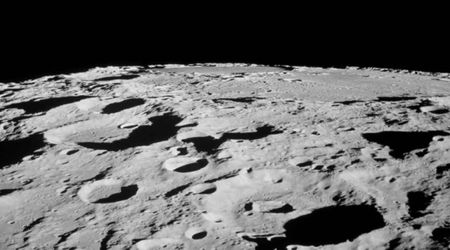How long does it take to get to Mars?


If you've ever looked up at the night sky and wondered what it would be like to visit Mars, you're not alone. Mars, the fourth planet from the Sun, has long been the subject of human curiosity and exploration.
For centuries, humans have been fascinated by the red planet, and with recent advances in space technology, the dream of traveling to Mars is closer than ever. But just how long does it take to get there?
The answer, of course, is not a simple one. There are many factors that can affect the duration of a journey to Mars, including the trajectory of the spacecraft, the speed of the spacecraft, and the position of Mars in its orbit around the Sun.
In this article, we'll take a closer look at these factors and provide some examples of past and future missions to Mars to give you a sense of the range of possible travel times.
Going to Mars, Facts to Consider
Mars, the Earth, and all the others planets are constantly revolving around the Sun. This means that their position is always different. For example, Earth moves around the Sun at a speed of 18 miles / 30 kilometers per second.
When we look at Mars, it moves with a speed of 14.3 miles / 23.3 kilometers per second around the Sun. Before starting a trip to mars, astronomers have to calculate the best position to launch a spacecraft toward it.
This means that they need to estimate at what point in time will the Red Giant be and in what direction the spacecraft will be launched. You also have to consider that you can't launch a spacecraft at any point in time to reach Mars at an exact timeframe. You have to consider the position of both planets beforehand.
Take this into consideration. Mars is at an average distance of 140 million miles / 225 million kilometers away from Earth. In 2003, our planets reached their closest point (perihelion) at a distance of only 33.9 million mi / 54.6 million km. However, this approach doesn't happen every month. It occurs every two years or so. The aphelion or farthest distance between Mars and Earth is at 250 million mi / 401 million km.
Related reading: How Far Away is Mars From Earth Right Now?
You can imagine all the different necessary calculations and estimations that astronomers must go through when preparing for a trip to Mars. Not to mention that you also need to take into account that if you reach Mars, you will also need to stay for several months there until the planets are in the perfect position to maximize your fuel efficiency.
Some predictions for a human-crewed mission to Mars and back to Earth are situated at the 21-month mark. But it may take more or less depending on the technology involved. You also need to consider all the possible delays or unexpected issues.

The Necessary Speed to Reach Mars
The Apollo 11 mission to the Moon reached an incredible top speed of 25,000 mph to reach the Moon in four days. If you were to go to Mars with the same technology, you would reach it in two and a half months. Yet, you must consider that maintaining this speed for so long is impossible. Not to mention the amount of fuel you would need, which implies a more massive spacecraft to store it, and since the spacecraft size will be different, other factors will affect your speed and fuel consumption.
Currently, the fastest spacecraft we have is NASA's Parker Solar Probe. In 2021, the Parker Solar Probe reached a top speed of 364,621 mph / 586,000 kph. This is 14.5 times faster than the Apollo 11 spacecraft's top speed.
If the Parker Solar Probe would be sent to Mars, it may reach it in 16 days. If we were to imagine a straight line between the probe and the Red Planet, and if the probe would be launched at the closest encounter between our two planets, it may reach it in 93 hours or so. However, this isn't the case when it comes to space travel. Not to mention the issue mentioned earlier, the fact that planets aren't static, and thus there is no constant distance.
Astronomers have to predict where a planet will be once they launch a spacecraft. How long it takes to get to Mars depends mostly on where the Red Giant and our planet are situated, when the spacecraft is launched, and what propulsion systems are used.
According to NASA, a mission to Mars would take around nine months if you begin your trip when the planets are properly lined up. The perfect window to get to Mars from Earth occurs once every 26 months. If we develop better ways to burn up fuel, we could reach Mars even faster, but our current technology is still very limiting.
Related Article: How Much of Space Have We Explored So Far?

Flight time of past missions to Mars
In the history of space exploration, there have been many missions to Mars, some successful and others not. As I mentioned in the intro, Mars has been the subject of interest for scientists for a long time. Especially when it comes to the prospect of finding signs of life on another planet.
Regardless of their different goals, the one thing that all of these missions have in common is that they all took a significant amount of time to reach the red planet. In this section, we'll take a closer look at the flight times of some of the past missions to Mars and see how they compare to each other.
- Mariner 4 (1964) had a flight time of 228 days.
- Mariner 6 (1969) got to the red planet in 156 days.
- Mariner 7 (1969) got to Mars in 128 days.
- Mariner 9 (1971) reached the red planet in 167 days.
- Viking 1 (1976) took on an 11-month cruise to Mars.
- Viking 2 (1976) had a flight time of 360 days.
- Mars Odyssey (2001) reached the dusty planet in about 200 days.
- Mars Express (2003) completed its journey in around 6 months.
- Opportunity Rover (2003) landed on Marse after 201 days spent in space.
- Spirit (2003) touched down in Gusev crater after traveling for 179 days.
- Mars Reconnaissance Orbiter (2005) took 210 days to reach its destination.
- Phoenix (2007) completed its travel to Mars in 295 days
- Curiosity (2011) touched down on the martian surface after a trip lasting 253 days.
- MAVEN (2013) entered the martian orbit after a 10-month trip.
- Insight (2018) reached Mars in 206 days.
- Perseverance, the latest rover to make it to Marse, did the trip Earth-Mars in 204 days.

Future Missions to Mars
Technology always evolves, and astronomers are always looking for new ways to conduct space missions and shorten their flights. NASA already works on something new that may help Mars missions.
The Space Launch System (SLS) is under construction and will conduct various tests that will help upcoming Missions to Mars, perhaps even manned missions. One of the first SLS rockets being designed for future Mars and Moon missions is the Artemis 1.
Artemis 1 just recently completed a near-flawless mission to the Moon and broke Apollo 13's flight distance record. It is currently the most powerful rocket ever built. The future Artemis missions to the Moon will help establish new technologies and strategies to reach Mars.
With our current technology, we need more field tests in order to be sure of what is to come. However, the successful mission of Artemis 1 proves once again that mankind's determination is unyielding. Through Artemis 2, we might have a new crew land on the Moon as soon as 2024 or 2025. Any successful mission on the Moon brings us closer to planetary missions, and the good news is that nowadays there are more space companies willing to do the job than ever before!
Reaching Mars at the Speed of Light
If you were to go to Mars using the speed of light, you would reach it in about three minutes at their closest possible approach. The speed of light is around 186,000 mi / 300,000 km per second. Reaching the speed of light is a goal for any interplanetary mission. However, it is unknown if humans can travel at such speed without consequences or if it is possible to reach this speed at all.
Conclusion
Between the first moon landing and the commercialization of spaceships are only 50 years of rapid development. The impending collaborations of multinational associations like NASA, Roscosmos, CSA, and private companies are set to be game changers for humanity. The upcoming decade promises entirely new opportunities, from Moon settlements and out-worldly discoveries to breathtaking experiences accessible for tourists and businessmen alike.
Explore more space travel stories ?
This page is part of our collection of articles about astronauts. If you enjoyed the read, then you'll love the following articles.

How long does it take to reach the Moon?

How long does it take to reach the Uranus?

Countdown to Saturn: The Travel Time Involved

Traveling to Jupiter: How Long is the Journey?

How Long Does it Take to Get to The Sun?










